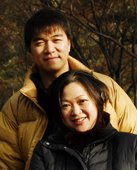Tuo cha is one of the many forms found among the large variety of compressed pu'er teas. Tuo cha, unlike the more prevalent variety known as zhuan cha or brick tea, is compressed into the form of a bowl, resulting in a rounded, mushroom cap exterior and a hollow cavity within. Tuo cha was introduced by the famous Xiaguan Tea Factory of Dali prefecture, Yunnan Province in 1902 towards the end of the reigning Qing Dynasty. Today it boasts more than 100 years of history.
The creation and evolution of tuocha is closely linked to the rise of the Ancient Tea and Horse Trail of southwestern China. Since the beginning of the Song Dynasty (960-1279AD) and the advent of frontier trade on the Tea and Horse Trail, horse caravans transported raw tea from the southern Yunnan districts of Simao, Lancang, Baoshan, etc northwards through the mountains to Dali, where the Xiaguan Tea Factory remains today.
The long journey often presented adverse weather conditions where man and horse were left to battle high winds, torrential rains and lofty elevations on vast mountain expanses. Needless to say the unpredictable weather conditions caused dramatic effects on the horseback-carried teas. The tea - tightly compressed in hemp
sacks - was exposed to high heat and humidity and was likely to break, causing irreversible damage to the tea.
In response to these conditions and the threat they posed to the transport of tea, Xiaguan Tea Factory innovated by adapting the so-called gu niang yuo from the Simao Jingu region into what was then referred to as a “Mortar Bowl” and what is better known today as tuo cha. Tuo cha has since been known as the emblematic symbol of the Ancient Tea and Horse Trail and the Xia Guan Tea Factory.
Extracted from Andao Tea




No comments:
Post a Comment